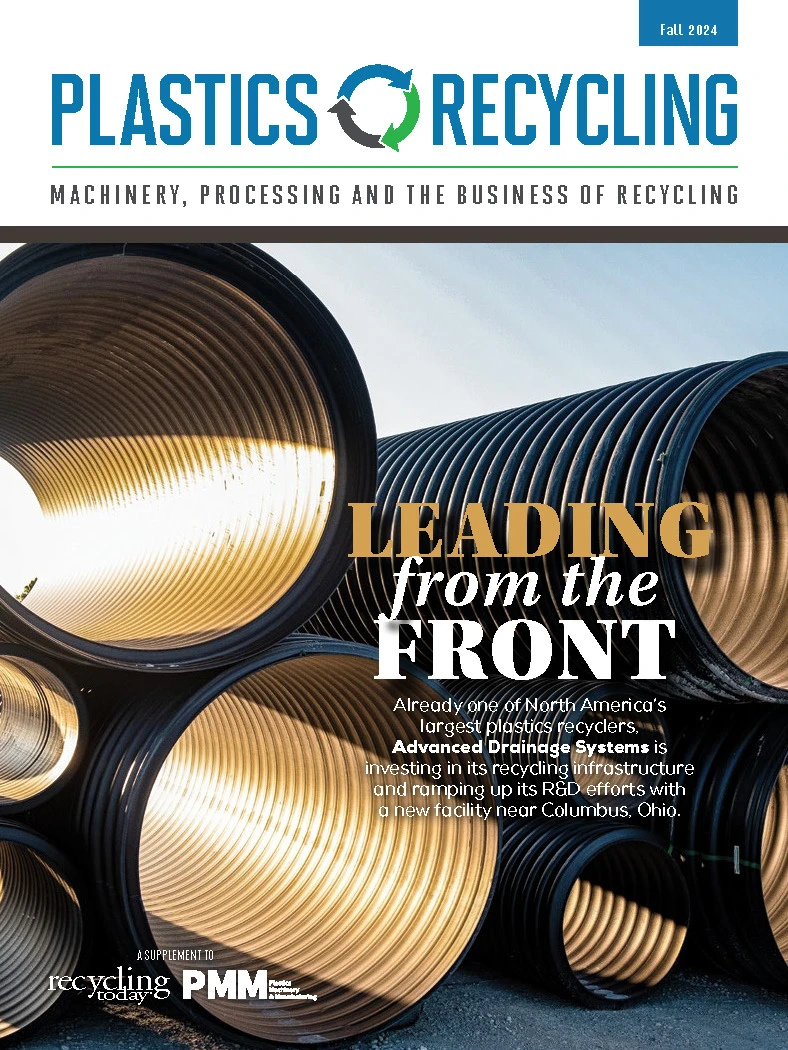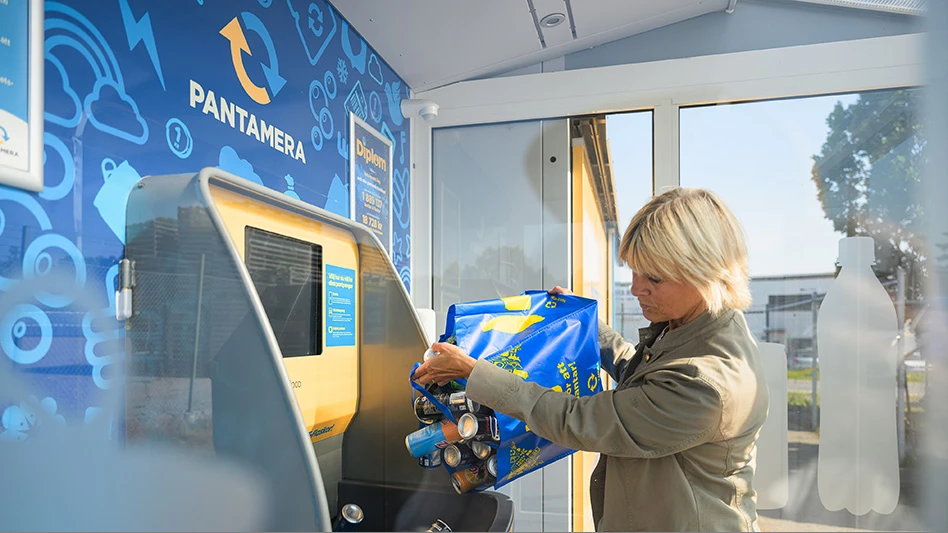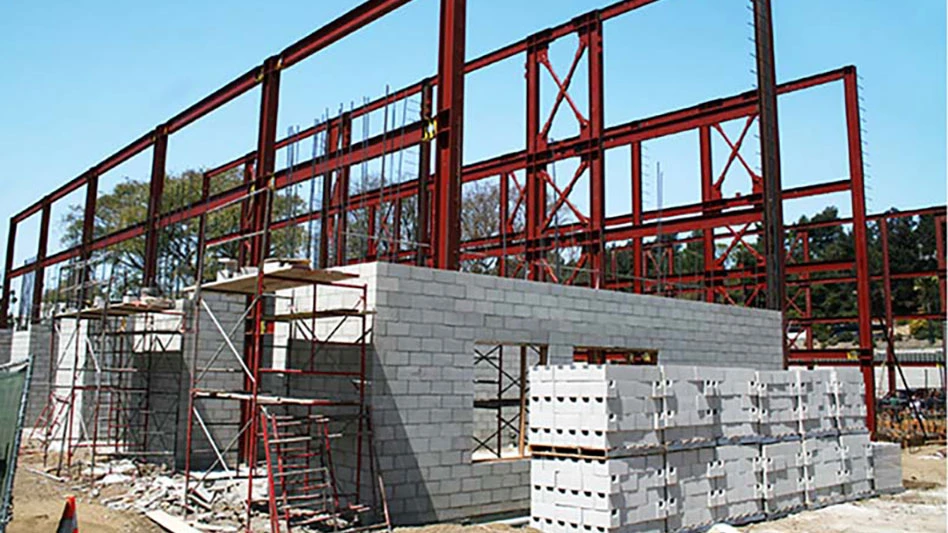The 400 refuse trucks that roll into Caglia Environmental’s Cedar Avenue Recycling and Transfer Station (CARTS) in Fresno, California, six days a week bring all manner of material. Crushed boxes, construction debris and smashed cans tumble around alongside broken glass and, occasionally, hazardous waste, which the company warns customers against putting in their bins.
Recovering value from that material takes a lot of hands, and over the years, family-owned Caglia has gone high-tech by acquiring robots.
With the support of The Recycling Partnership (TRP), Washington, Caglia recently set up three six-axis Fanuc robots, all offered as a turnkey solution from Fremont, California-based EverestLabs Inc.

Photos courtesy of Caglia Environmental
Using EverestLabs’ RecycleOS, an artificial intelligence (AI), analytics and robotics software solution, the robots sort polyethylene terephthalate (PET) from three categories: pigmented or opaque PET, PET bottles and thermoforms. CARTS installed the first robot on its last-chance line in August 2023 and the two others on its quality-control line in December.
The robots join AI-powered robots already employed for the recovery of polypropylene and high-density polyethylene, as well as four optical sorters for various material streams.
EverestLabs robots programmed with its RecycleOS software can identify more than 50 classes of objects in a matter of seconds, including plastics, metals, glass and more.
“Most recycling facilities face labor challenges, and Caglia is no exception,” says Justin Raymond, director of postcollection operations for Caglia. “We found that we didn’t always have enough staff to fill all the sorting positions throughout the facility. As a result, when EverestLabs was proposed for our last-chance line, we were interested as it would increase revenue and decrease their labor challenges.”
Guided by software
According to EverestLabs CEO JD Ambati, with RecycleOS software, robots can identify more than 50 classes of objects, including plastics, metals, aluminum, glass, cardboard and foam, in seconds—even if these materials have been mangled.
The software helps recycling plant operators recover more value from materials, ensuring a high-quality feedstock for packaging manufacturers interested in incorporating more recycled content in their goods.

In addition to its sorting software, EverestLabs provides closed-loop monitoring of all its robotics systems. Ambati says the company’s Robotics Operations Center “provides 24/7 monitoring of robot, AI and plant performance and health for your RecycleOS system, alerting EverestLabs and your facility if our AI for our recycling system needs to be checked on.”
Data collected by the system can help companies track and verify their sustainability efforts.
The RecycleOS system is compatible with all kinds of robots, but, EverestLabs says, six-axis robots offer a slew of advantages, including reliability, versatility and accuracy.
“We realized that with a purpose-built AI and automation platform, we can transform recycling plant operations and sustainable packaging manufacturing,” Ambati says.
The benefits of robots
The robots are one project of many supported by TRP in its work to improve recycling access, collections, operations and processing.
In addition to investing in technology, TRP—through its material-specific coalitions, including the PET Recycling Coalition—has supported the expansion of residential curbside recycling carts and drop-off recycling programs, as well as access to educational programs.

“The underlying goal of all our grants is to improve the performance of residential recycling in the U.S.,” says Rob Taylor, the organization’s vice president of grants and community development.
Robots offer a lot of benefits for recycling, Ambati says.
“Robots and recycling may seem unlikely companions, but robots are improving the recycling process for the better,” he says.
“Our AI technology identifies the materials sent to recycling facilities and determines which pieces of packaging or contamination the robot will pick and which to leave on the line. Robotic sorting is helpful because it is more accurate and efficient than traditional hand-sorting in quality control and net new recovery roles, where overworked employees are repetitively sorting materials for eight hours a day and can barely sort 10-15 objects per minute.”
By comparison, Raymond says the new robots set up by EverestLabs can make 60 picks per minute. He characterizes CARTS’ use of the robots as a “first of its kind” in single-stream material recovery facilities (MRFs).
“EverestLabs’ real-time and easy-to-use analytics platform, alongside an easily retrofittable robotic cell with zero disruptions and guaranteed highest recovery in the industry, is what appealed to us,” he continues. “The product is flexible and reliable, and the EverestLabs team is easy to work with.”
Setting up for success
EverestLabs first schedules a site visit to determine how robots might best help its partners.
Ambati says installation of EverestLabs robots takes only a few days, and fine-tuning—to get the robots to an accuracy level of more than 95 percent—takes one or two weeks.

In the last year, EverestLabs has partnered with packaging manufacturers and nonprofits to increase the recovery of recyclable materials, including plastic. The approach has been working for CARTS and Caglia, as well as other facilities that have adopted EverestLabs technologies.
With robots, facilities can double or even triple the volume of materials they’re able to recover, better protect workers and curb waste. Robot uptime can hit 99 percent and, according to EverestLabs, return on investment takes as little as three months.
As an example, the EverestLabs website cites the case of a large MRF that turned $2 million in annual losses into $400,000 in new net revenues. Alameda County Industries, based in San Leandro, California, is another success story—it saved 60 percent on labor costs and now experiences uptime rates exceeding 99 percent.
For recycling facilities looking to improve, TRP is one source of possible help.
Grants for technology upgrades have included a new optical sorter and related equipment for the Pico Rivera MRF in Los Angeles, operated by Houston-based WM, which will be able to increase the amount of material it can recover by 70 percent. Meanwhile, with the adoption of optical sorters to separate PET bottles from nonbottle PET containers, such as cups, tubs and trays, 850,000 people in the Charlotte, North Carolina, area now can recycle nonbottle PET for the first time, according to TRP.
By the end of 2027, the coalition aims to capture an additional 250 million pounds of PET for recycling.
Getting results
Caglia and CARTS embody the potential the coalition sees for improvement.

$5 million in grants since 2022.
“The Partnership’s PET Recycling Coalition awarded a grant that allowed Caglia Environmental to implement bold and replicable new systems for PET recycling, putting them at the forefront of separating PET into specialized streams,” Taylor says.
Ambati adds that with the right technology, much more material can find new life.
Casarra Aragon, Caglia’s marketing and outreach manager, and Raymond are seeing that’s the case.
“This system sets a new standard in the recycling industry, improving PET recovery rates and serving as a model for other material recovery facilities,” Aragon says.
In all, Caglia employs 250 people, and with the robots, Caglia hasn’t cut its workforce but has grown more efficient.
CARTS recovers more than 70 percent of the material it collects, Raymond says.
“The workforce size has not been impacted,” Raymond says. “Human sorters are still an essential piece of our process. While the addition of AI has increased our efficiency and recovery rates, it has not resulted in any loss of jobs. Some of our staff on the sort line have been transitioned into new roles at our MRF where they still play crucial parts in our recovery process.”
Get curated news on YOUR industry.
Enter your email to receive our newsletters.

Explore the Fall 2024 Plastics Recycling Issue
Check out more from this issue and find your next story to read.
Latest from Recycling Today
- CP Group announces new senior vice president
- APR publishes Design Guide in French
- AmSty recorded first sales of PolyRenew Styrene in 2024
- PRE says EU’s plastic recycling industry at a breaking point
- Call2Recycle Canada, Staples Professional expand partnership
- Circular Services breaks ground on north Texas MRF
- Tariff uncertainty results in choppy nonferrous scrap flows
- CATL, Ellen MacArthur Foundation establish battery partnership






